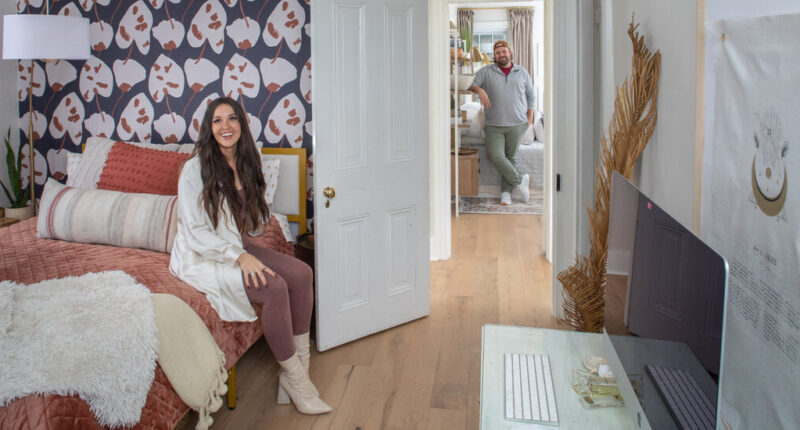
“You’re no longer trying to figure out ways to break away from your family and get your alone time,” said Mr. Newhart, 31, who works for a health insurance company.
The couple started sleeping apart at the beginning of the pandemic, when they were home together 24-7 in a house in Houston with an open-concept floor plan. All the family time was more than his wife, Cara Newhart, could take.
Ms. Newhart, 30, moved into a guest room.
“I’m an introvert and I need alone time to recharge,” said Ms. Newhart, an interior designer and the host of a podcast called “Make Space.”
Once she made the move, she loved it. She realized what she had missed, having only lived alone briefly in college and becoming a mother at 24.
With her own room, she could express herself. “We had to be thrown into being parents, we both lost ourselves. As our daughter gets older we are re-emerging and asking, ‘What are my hobbies? Who am I?’” Ms. Newhart said. “Having physical space for that process has helped a lot. We don’t feel like we’re just stuck with somebody.”
Last June, the couple decided to make the sleeping arrangement they had in Texas permanent when they moved to a three-bedroom house in New Jersey. Ms. Newhart designed her room with burnt orange and navy hues, light natural wood tones, and a bold, patterned statement wall behind the bed. She designed Mr. Newhart’s room with cool blues, grays and darker wood tones. Their 6-year-old daughter sleeps down the hall. “I want my space to look like my personality and that’s really important to me,” she said. “I wanted a room where we don’t take our design styles and mash them up.”
You don’t have to do that much to make two rooms feel equally special. Rodney Lawrence, an interior designer in Manhattan recently worked with a young couple on the Upper East Side who wanted to make a secondary bedroom feel more like a primary one so the wife could sleep alone because her husband kept her up late. Mr. Lawrence selected furnishings and colors for each room that complimented the couple’s overall aesthetic, and resulted in two spaces that felt equally significant, so one partner did not feel relegated to the guest room. “I think it’s way more common than people think,” he said.
Source: | This article originally belongs to Nytimes.com









